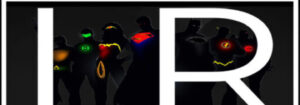Jupiter’s Legacy (2021) is the new superhero show from Netflix based on the comic-book series of the same name published by Image Comics (The Walking Dead, Invincible). Adaptations of Image Comics seem to be the norm now, and might as well be the third most profitable comics related venture following the ever-popular Marvel and DC Comics mainstream transitions.
The Plot
Originally written by Mark Millar (Kick-Ass) and drawn by Frank Quitely (The Authority) and run by Steven S. DeKnight (Spartacus), Jupiter’s Legacy follows two generations of superheroes, the old generation led primarily by The Utopian (Josh Dushamel), Lady Liberty (Leslie Bibb), Brainwave (Ben Daniels), The Flare (Mike Wade) and Matt Lanter as Skyfox. The new generation comprises mostly of The Utopian’s son The Paragon (Andrew Norton) and daughter Chloe (Elena Kampouris). The primary plot follows the new heroes trying to fill in the shadows of their predecessors while at the same time dealing with personal issues – and overpowered villains. What forms the motif is The Code, originated by The Utopian, which states that under no circumstances can a hero kill anyone. So how the old and new generations deal with this code in the 21st century is what this show is all about.
Video Review (Urdu) by Mahnoor Khan
Before we get into my review check out Mahnoor Khan’s Urdu-language analysis of Jupiter’s Legacy season 1 on her YouTube Channel below:
The Good
The show’s CGI and action are amazing throughout except for the boss battle in episode 1 which featured glitchy VFX. The costume design of all the characters including the villains and also of the early 20th century era individuals is extremely well-constructed. Usually, the villains in comic-book based shows steal the show but here the foremost performance was done by Josh Dushamel in both his origin scenes as the world’s most popular hero, The Utopian, and the contemporary era sequences as well. The show is semi-predictable for the most part, and it isn’t just your run-of-the-mill superhero series, so MCU an DCEU fans will find Jupiter’s Legacy unique given that they are not avid comic-book readers of any company.
The Bad
It’s quite clear that Millarworld (The Netflix acquisition of Mark Millar’s comic-book company) is trying to ride high on the success of Amazon’s The Boys and Invincible. Even though I’m a huge Mark Millar fan (check out my review of his graphic novel Superman: Red Son here), I found this show to be a juxtaposition of storylines executed better in Amazon’s repertoire of comic-book based TV series. Due to this aspect, I was able to guess how the season would conclude just 5 minutes into the pilot episode. And my initial reaction from watching the trailer was that it was a combination of scenarios which have been superiorly executed by other writers/companies, and this can be further proven by taking a look at the trailer yourselves:
The Verdict
Even though super predictability and monotony mar Jupiter’s Legacy from giving us something fresh, it is still a welcome addition to the non-Marvel/DC Comics line of comic-book based TV series. Action, romance, mystery, science-fiction, etc., are all well-combined by JL to keep our attention spans throughout its meager 8 episodes. Ironically, I liked the origin story told in the form of flashbacks better than the modern narrative. Additionally, the cinematography of that epoch is just groundbreaking. I am not a 100% sure if Jupiter’s Legacy will be renewed for a second season but I’m definitely checking out the source material in my free time.
I also liked how this show didn’t disappoint me in the same vein as the canceled illustrated-novel adaptation, Frank Miller’s Cursed, which is not only the worst Netflix show that I have ever seen but also one of the worst shows of all time in my opinion, and I had high expectations for it, given that Frank Miller was one of the two showrunners along with Tom Wheeler. I am glad I kept my expectations for Jupiter’s Legacy lukewarm, and these conditions were met accordingly by the first season.
Related Readings:
Mark Millar’s Superman: Red Son (Graphic Novel) Review


